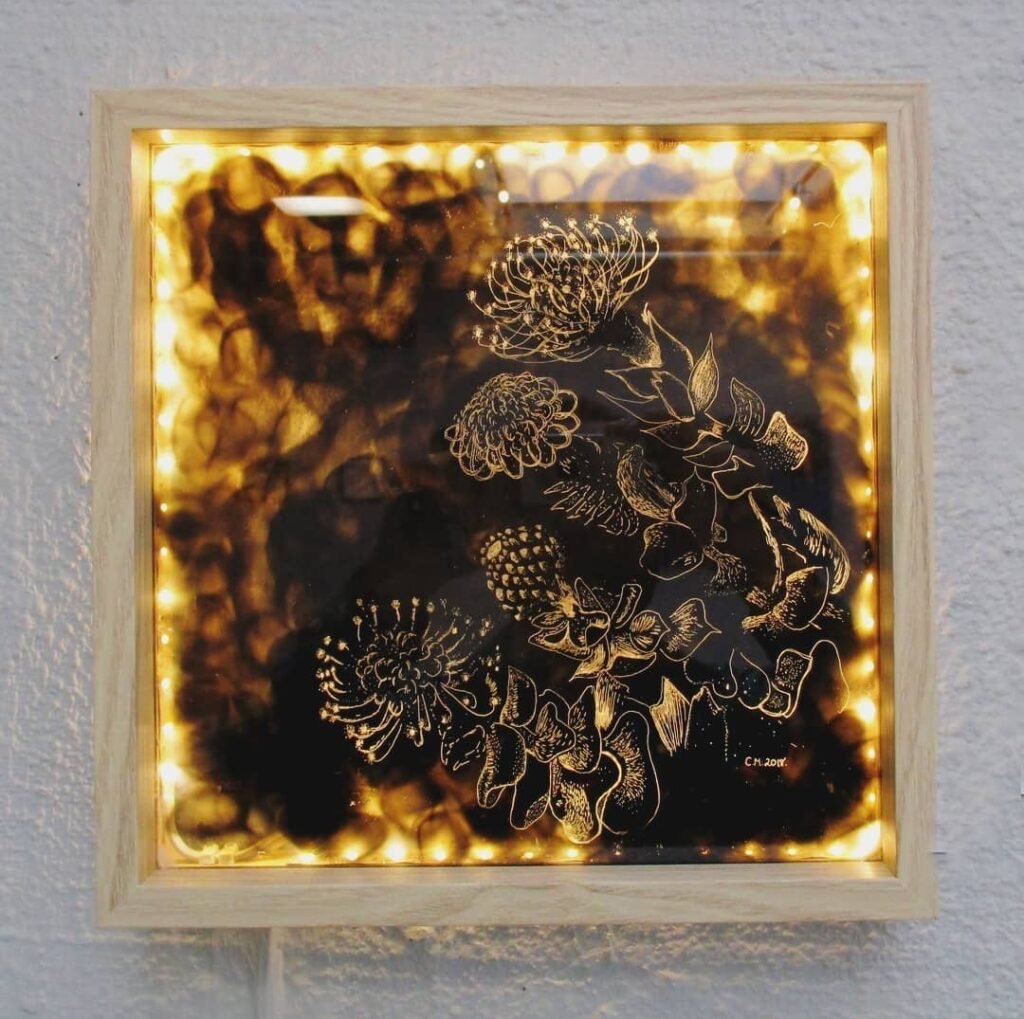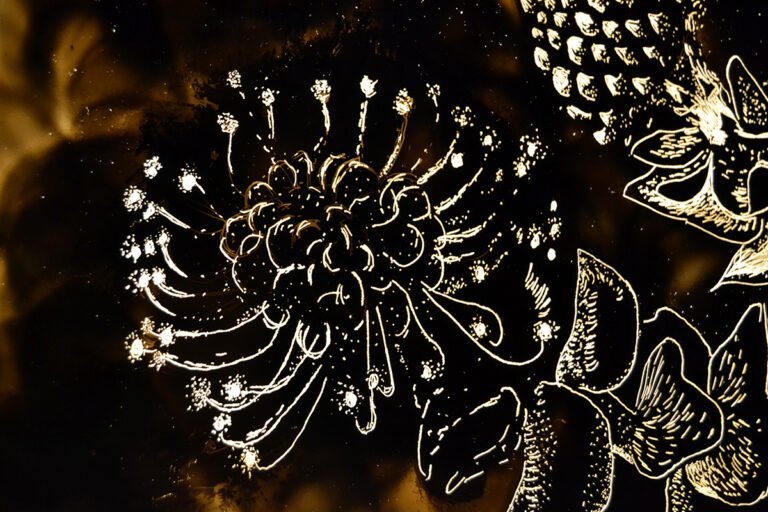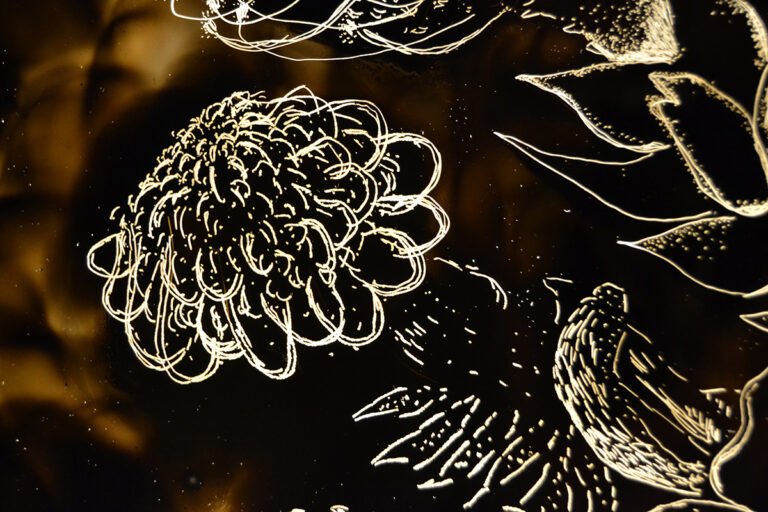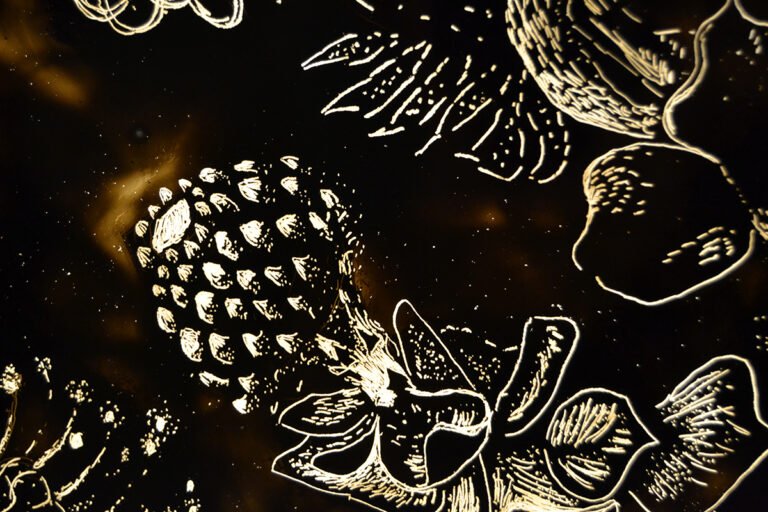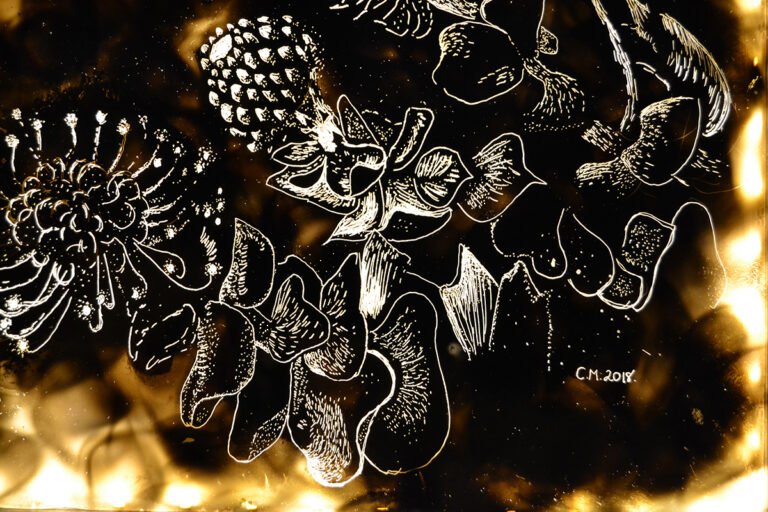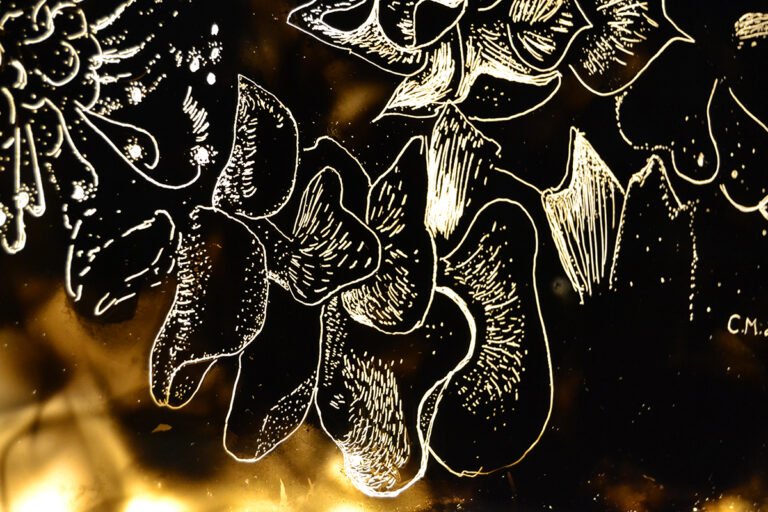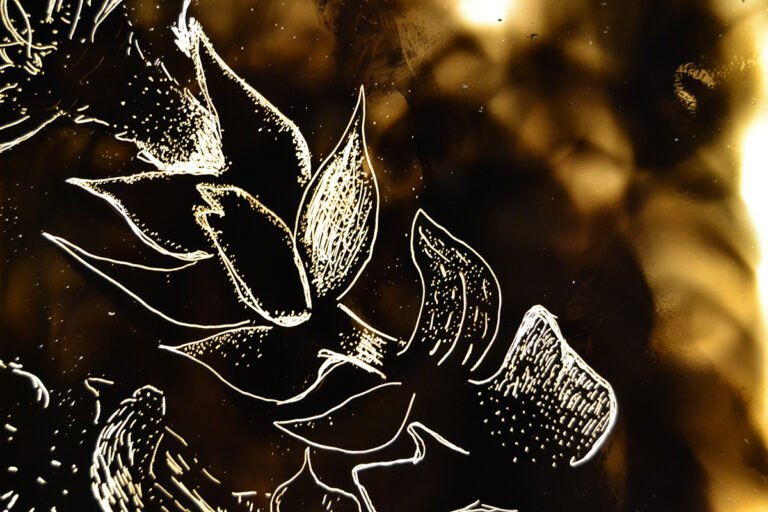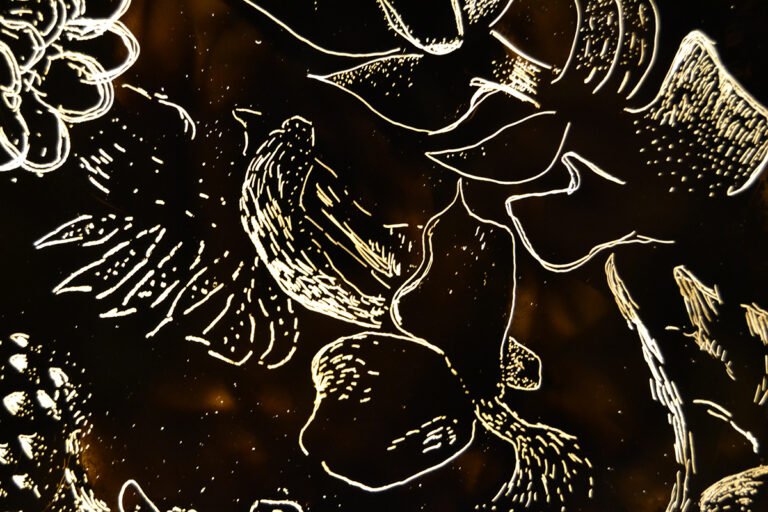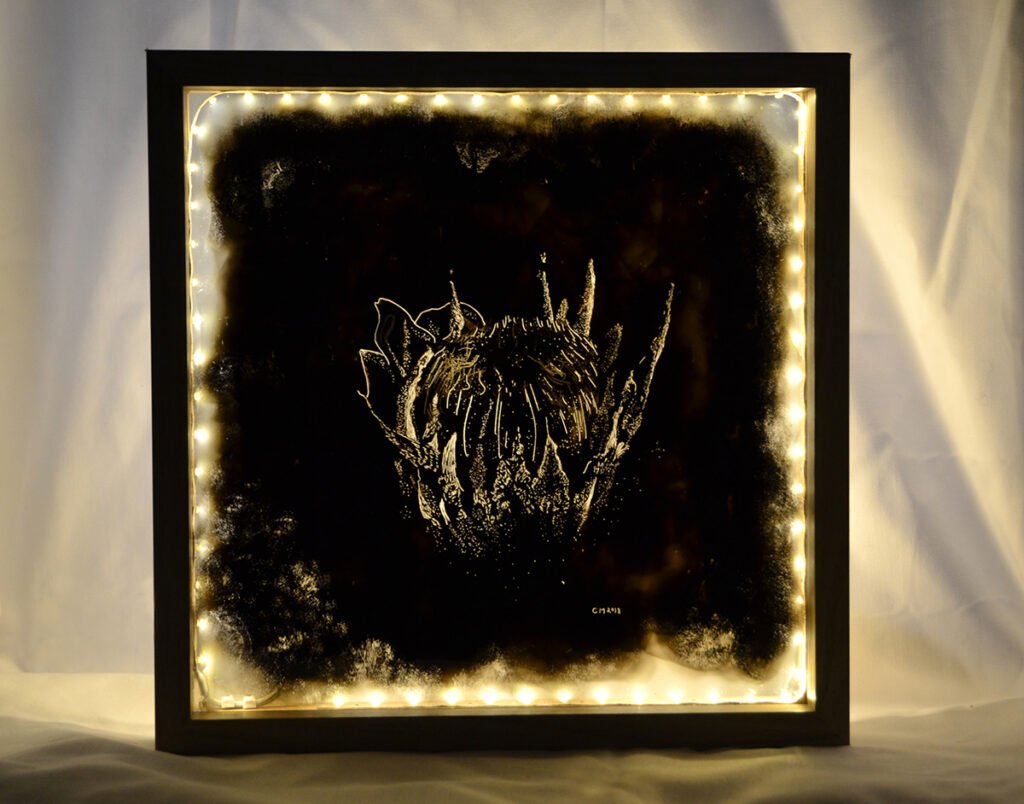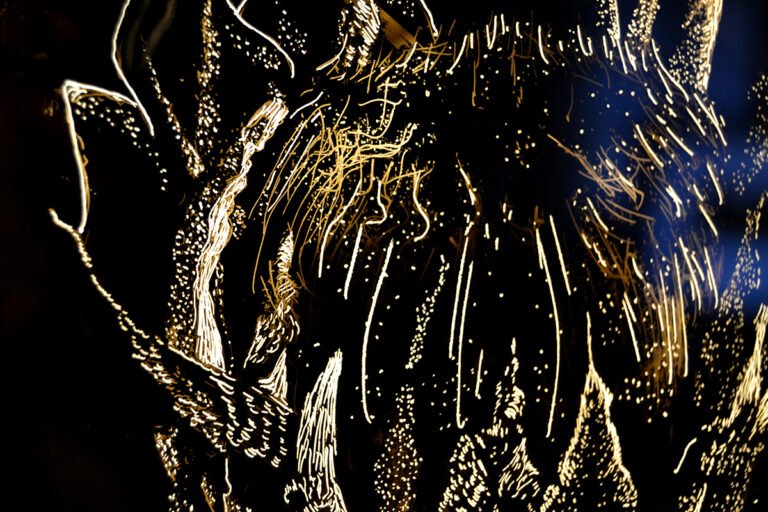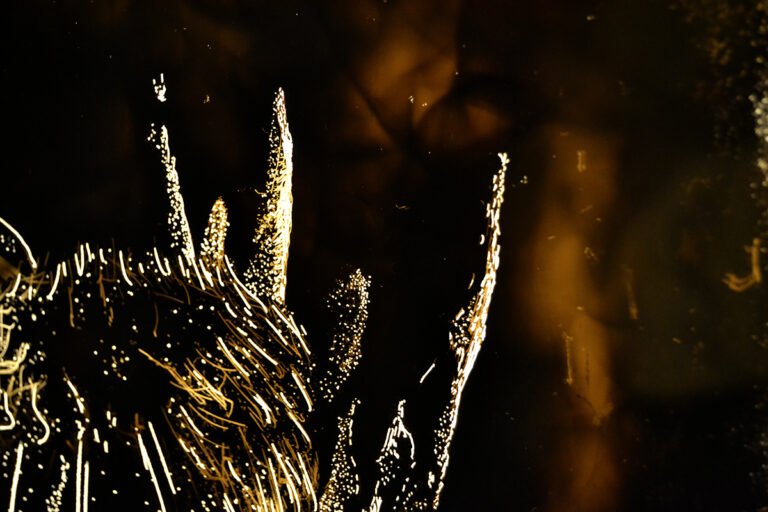2018
Botanica – New Perspectives on Botanical Art by South African Women Artists
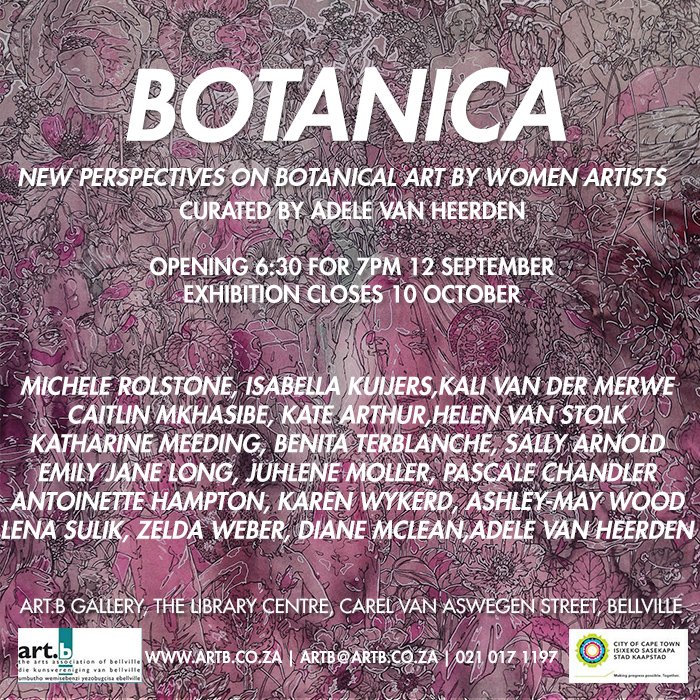
Botanica – New Perspectives on Botanical Art by South African Women Artists, curated by Adele Van Heerden, opens 12 September 2018 at the Arts Association of Bellville (Art.B Gallery) in Bellville, Cape Town.
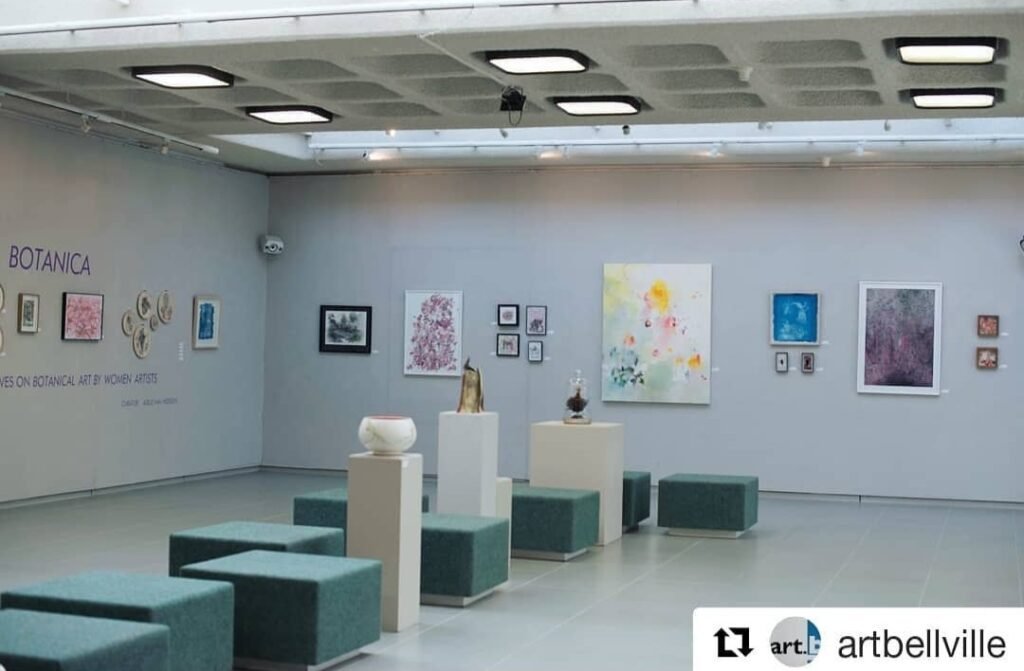
Artist Statement
Fire Season
Fire is crucial in the preservation of fynbos and in the absence of it, large parts of the fynbos ecosystem would slowly die and be substituted by alien species. The smoke on glass element of the artworks represent the dependence germination and the healthy growth fynbos have on controlled and well managed fire. In order to view the work, you can only see it by a window or a light source since it is transparent on both sides. This signifies another source of heat that triggers growth – the sun and the process of photosynthesis.
Resource: Esler, K.J, Pierce S. M & de Villiers C. (eds), 2014. Fynbos: Ecology and Management. 1stedition. South Africa: Briza Publications, pp. 45 – 50
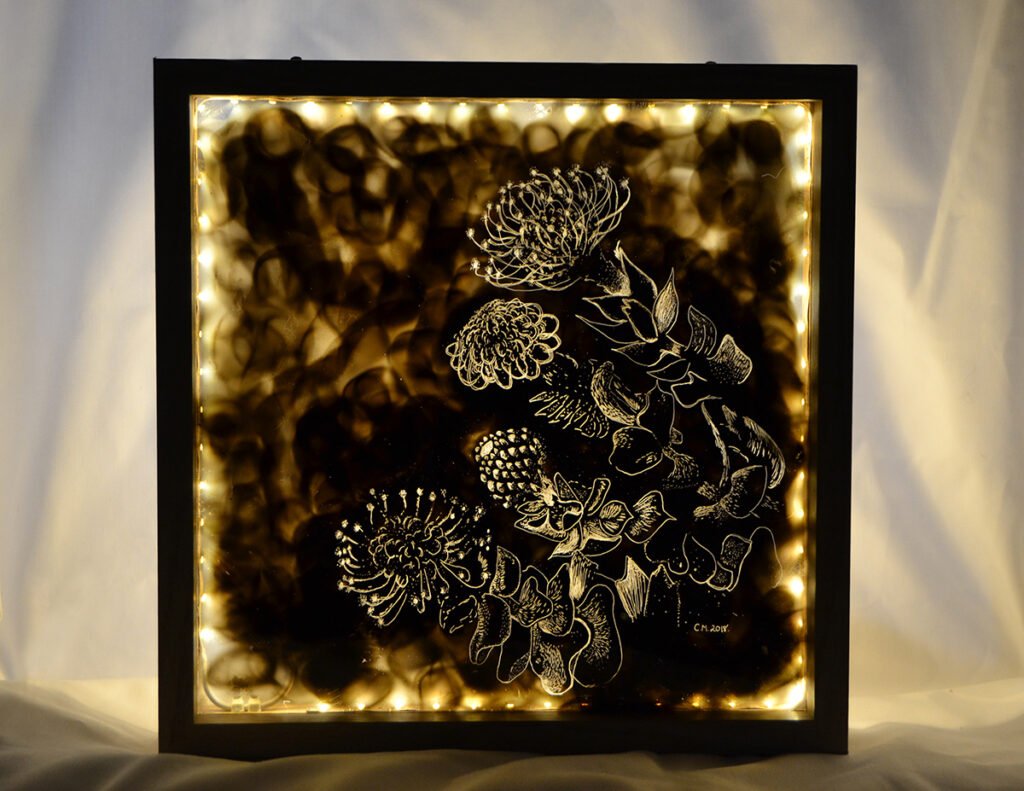
The Pincushion (‘myrmercochorus’ seed) produces seeds with a sort of flesh covering (called ‘elaisomes’) which are attractive to ants. The seeds are then dispersed by ants and are taken into their nests where they consume the elaisomes to reveal a smooth, hard seed. The ant nest has more nutrients than regular soil and the heat and smoke from the fire and drastic soil temperature changes between day and night stimulate the seeds to germinate. Fires in late summer or early autumn are best for myrmecochorus seeds as they need great heat for the germination process to happen.
Before a fire, the King Protea (‘serotinous’ seed) produces seeds and retains them during that fire. The plant dies but the seeds are spread by wind and only germinate in the first winter after a fire. The seeds need a short amount of time exposed to the environment after fires occur in either late summer or early autumn, otherwise they dry out or are eaten by rodents. This happens when the time between distributed seeds and winter is vast – as would be in the instance after a spring fire.
